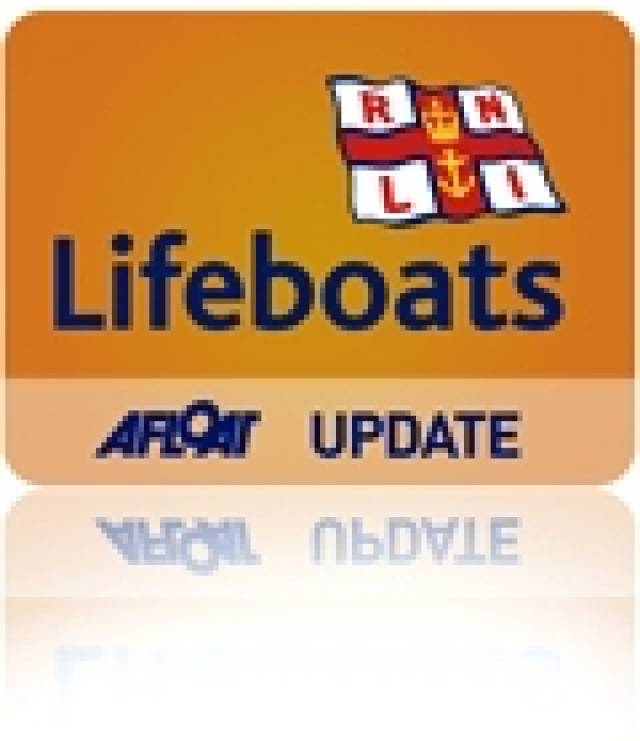#rnli – Lifeboat crew with Achill Island RNLI returned home in the early hours of this morning (Friday 20 September) after a marathon callout to a fishing vessel 54 miles west of Achill Island off the Mayo coast. The lifeboat crew battled rough sea conditions for seventeen hours to bring the fishing vessel, with five crew onboard, safely home.
The call for help was raised just before 11am yesterday morning (Thursday 19 September) from a 22 metre fishing vessel. The crew had been hauling in their nets when they became entangled in the boats propellers and they could not move. Sea conditions were poor with force seven to eight and four to six metre sea swells.
The lifeboat crew arrived on scene in three hours and set about establishing a tow with the casualty vessel. Once that was established they started on the long journey back to shore at a slow speed. However the damaged propellers were causing a problem with the steering of the fishing vessel and with the strong conditions the tow broke twice and both times had to be re-established by the crew.
The Achill Island lifeboat arrived back with the casualty vessel under tow at 4am but due to tides was unable to bring it safely to shore. They moored it outside the harbour and after a few hours rest launched again at 7am to bring it safely inside the harbour.
Commenting on the callout Achill Island RNLI Lifeboat Operations Manager Tom Honeyman said, "This was a very challenging callout for an experienced lifeboat crew. Due to the terrible weather the seven crewmembers onboard the lifeboat had to keep a constant watch on the vessel. When the tow broke twice they had be on deck in rough conditions to ensure it was re-established quickly.
They are an incredible bunch of people and some of them only got a few hours sleep before having to go out to their jobs after being at sea for the previous 17 hours. The lifeboat is so important to communities such as ours in Achill and the people who volunteer for the service are a credit to the RNLI."































































